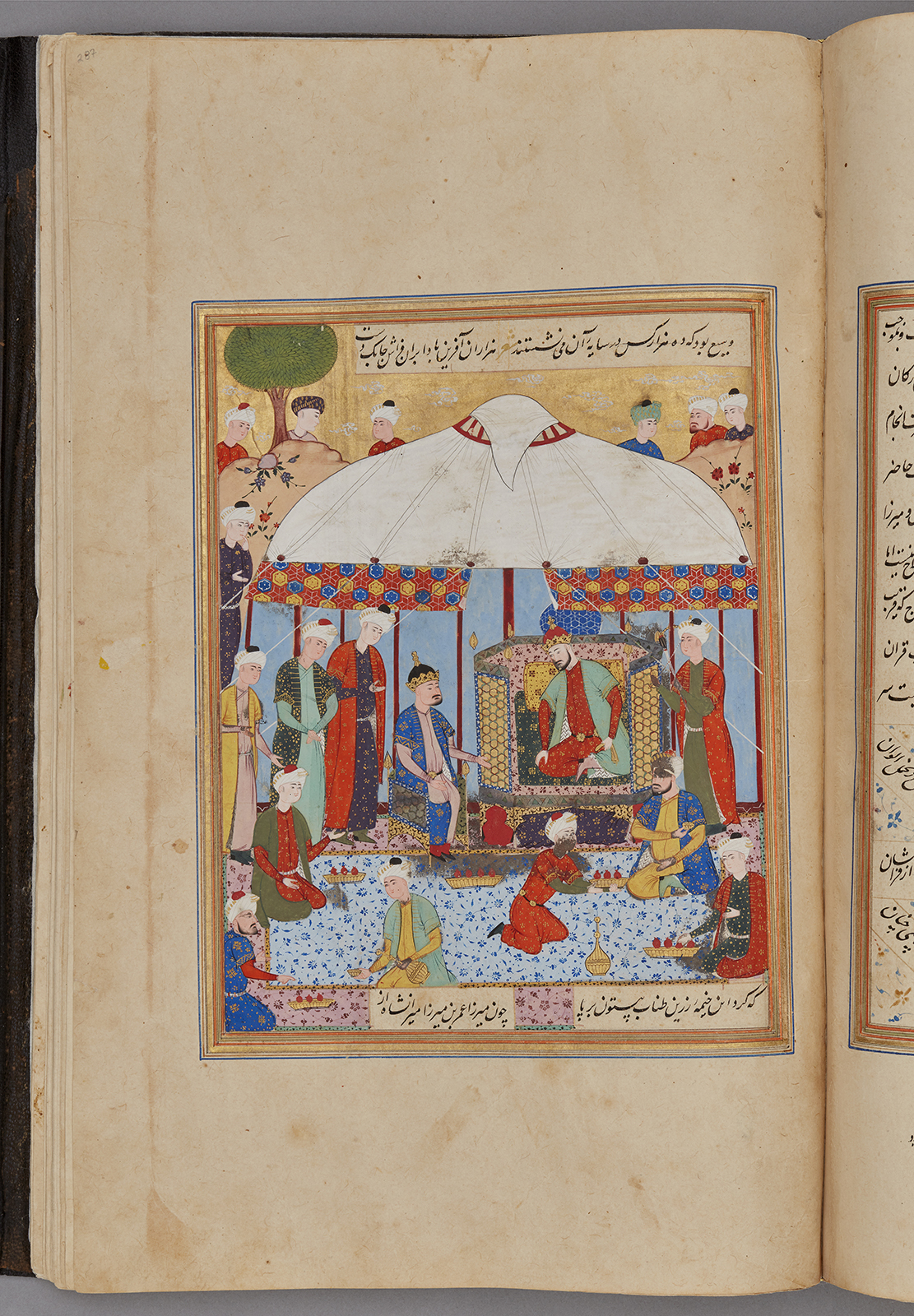Click on the image to zoom
Timur in his splendid tent, Folio from a manuscript of Nigaristan
- Accession Number:AKM272.f287r
- Creator:Author: Ahmad b. Muhammad Ghaffari, Persian, died 1567 Scribe: Ahmad al-Shirazi
- Place:Iran, Shiraz (probably)
- Dimensions:38.7 cm × 25 cm × 6.4 cm
- Date:1573-74 CE/980 AH/AH 980
- Materials and Technique:Ink, opaque watercolour, and gold on paper
The miniature painting "Timur in his splendid tent" is from an intact manuscript of Kitab-i Nigaristan, a collection of anecdotes and historical incidents written in prose by the historian and scholar Ahmad Muhammad Ghaffari (1504–1567/68) of Kashan in 1551–2. This illustrated manuscript, dated 1573, was probably produced in a Shiraz workshop.See AKM272 for more information about the manuscript and links to the other illustrations.
Further Reading
This illustration shows a scene under a white, overhanging tent in the open air. The composition is similar to that of an audience scene—typical of the miniature painting tradition—where a crowned figure holds the central position and other figures encircle him or her.
In this painting, Timur (1336–1405), also known as Tamerlan or Tamerlane, holds court in his tent. It is the end of a series of campaigns lasting many years,[1] and he has decided to regulate his internal affairs by ordering the leading families to marry each other in order to have offspring. The event is held in a tent camp whose size and splendour are supremely exaggerated in the text. At the centre of the event is the magnificent tent of Timur.
Court scenes[2] such as these, where a crowned figure sits enthroned, are among the favourite types of scenes depicted in miniature painting. The throne can be in a flourishing landscape or in an interior, depending on the context of the illustration. An interior court scene is usually supplemented by other figures such as servants and musicians.
- Elika Palenzona-Djalili
Notes
1. Timur was the Turko-Mongol conqueror and founder of the Timurid dynasty that endured into the 16th century.
2. For further reading on court scenes, see: Eleanor Sims, Peerless Images.
References
Nagel, Tilman. Timur der Eroberer und die Islamische Welt des späten Mittelalters. München: C.H. Beck Verlag, 1993. ISBN: 9783406371714
Sims, Eleanor. Peerless Images: Persian Painting and Its Sources. New Haven and London: Yale University Press, 2002. ISBN: 9780300090383
Note: This online resource is reviewed and updated on an ongoing basis. We are committed to improving this information and will revise and update knowledge about this object as it becomes available.


